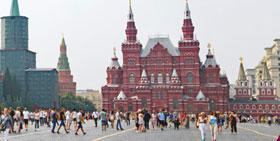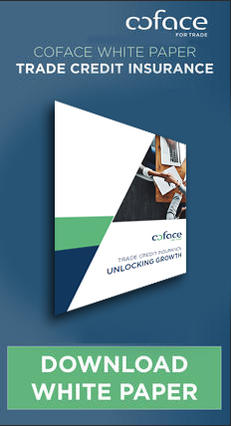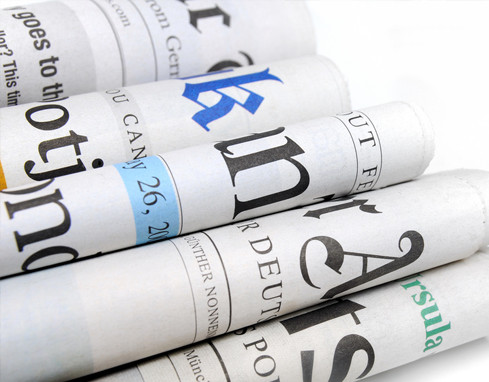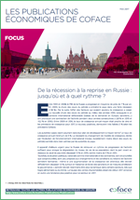Russia Is Emerging from Recession, but Structural Constraints Could Hurt Medium-Term Growth

Some sectors of the Russian economy, notably agrifood, chemicals, and automotive, are seeing an uptick in business that will contribute to a recovery in 2017, according to a report by global credit insurer Coface. But this diversification of the Russian economy, made necessary by the lingering slump in oil prices, is coming up against structural constraints that may have an adverse effect on medium-term growth.
Major Impediments to Diversification: a Shortage of Manpower by 2020 and Lack of Investment
After two consecutive years of contraction of economic activity (-2.8% in 2015 and -0.2% in 2016), the 2017 growth forecasts for the Russian economy are once again positive, albeit weak (1%, according to Coface). The vulnerability of mid-term growth can be traced to the heavy dependence on hydrocarbons. Despite the recent upturn in oil prices, Russia cannot count on this being sustained, or on strong growth in oil production.
The diversification of the economy, which is part of the Russian State strategic plan, is up against various structural obstacle including demographics. The working-age population has dropped since 2010. In addition, the sanctions imposed following the Ukrainian crisis and governance failings (regulatory quality, political liberty, corruption) are limiting foreign investment. Finally, private Russian capital is not always directed toward the national economy, with some favoring savings over investments.
Production Facilities and Work Productivity Need to Improve
Even when faced with these structural constraints Russia has kept its competitiveness growing: considerable progress has been made in this regard over the last five years (from 67th place in 2012-2013 to 43rd place in 2016-20171).
Higher oil prices and the lifting of sanctions would spur private investment, which has been in decline since 2013. A turnaround here would enable the production facilities to be improved and expanded.
While education levels and scientific research are among the country's assets, work productivity levels are static in Russia, and are more than seven times less than that of the USA and more than five times less than the EUels. The unit cost of labor, however, is relatively high.
The steep drop in value of the rouble in 2014-2015 has boosted the competitiveness of some Russian goods compared to imports, but mainly in sectors that have enjoyed support measures, such as agrifood, chemicals and rubber/plastics. After two years of steep decline (-36% in 2015 and -11% in 2016), auto sales were up in March and April 2017, signaling a more positive trend for this sector in 2017.
Download the Publication - Russia – From Recession to Recovery, but to What Extent and how Fast?
- While the outlook for the oil sector is not very favorable, the diversification of the Russian economy faces major structural constraints
- Russia must find means to increase its competitiveness
Contact
Annie Lorenzana
COMMUNICATIONS MANAGER
North America
MOB: +1 (407) 221-3496
Annie.Lorenzana@coface.com









